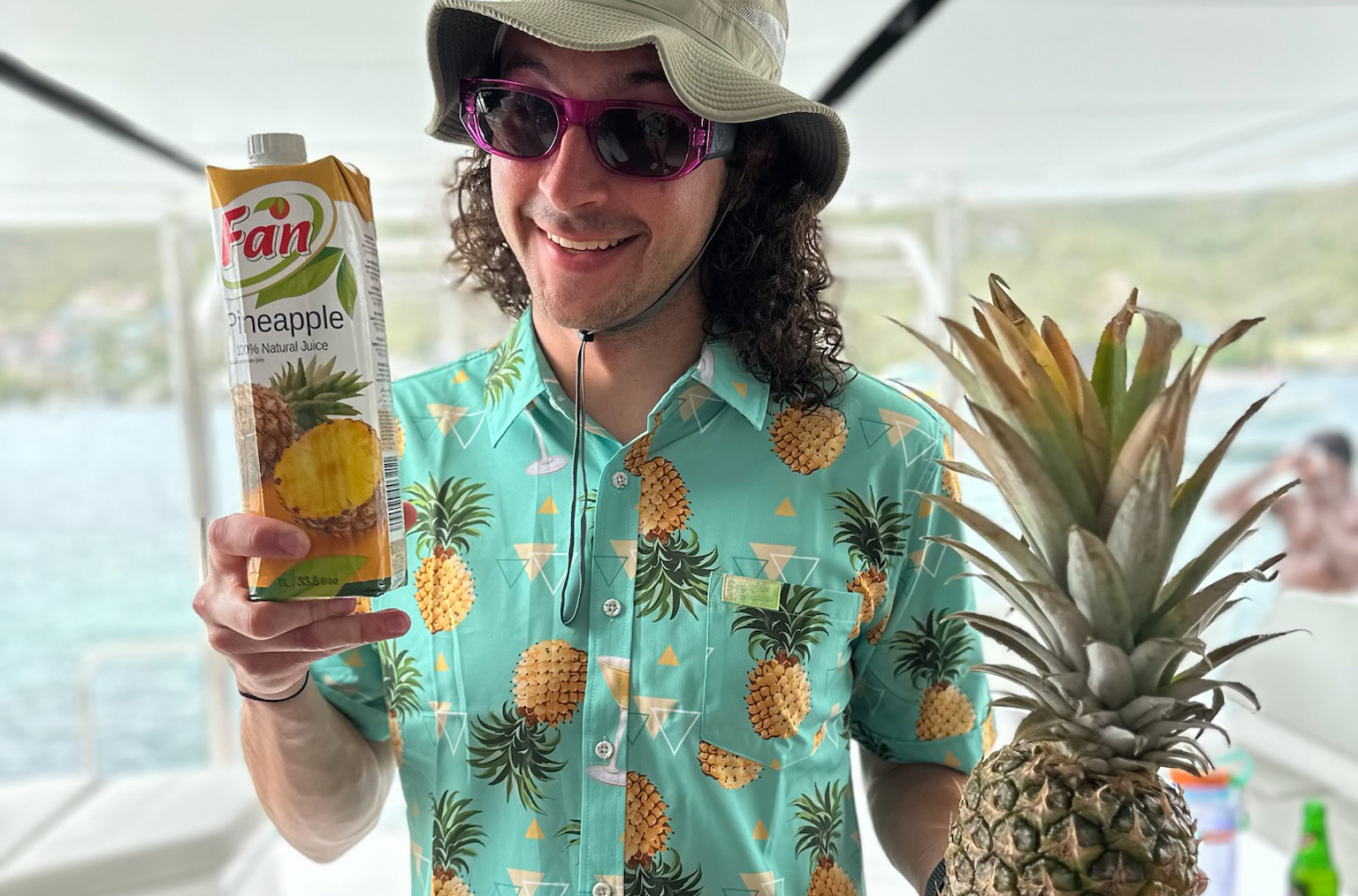
Intro
Most of our reviews are pretty long — and take a long time to produce — because we want to provide enough info for you to actually determine whether the gear we tested will work well for you.
But we get asked to check out an increasingly wide range of products, and sometimes, we just want to tell you about something we’ve been using and loving lately.
So that’s where this monthly series — Stuff We Like — comes in, where we keep you current on a broad range of stuff we’re currently digging.
And if there’s something you love that you think we ought to check out, drop us a note in the comment section below.
OneUp V3 Dropper Post
MSRP: $270 USD (post only), $45 (remote only), or $299 USD (post + remote)
Zack Henderson: My experience with the OneUp V3 Dropper Post began when my time with my OneUp V2 post ended. After almost four years of multiple rides per week, several seal kits, and installing OneUp’s oversized pins to account for heavy wear on the internals, my OneUp V2 post was feeling rough enough that it needed replacement.
David Golay already published a long-term review of the OneUp V3 post last year, and while I’m still fairly early in my time with it, the first couple of months of riding have already left me impressed.
To be clear, the day to day experience of riding the V3 post isn’t all that different from the V2, but the refinements make it a worthy evolution of a deservedly popular design. It’s somehow lighter (mine is 530 grams w/ the titanium bolt kit vs. my V2’s 591 grams, both in a 31.6 x 210 mm size), better at keeping grit out of the internals (the V2 wasn’t the best there, to be fair), and it actuates noticeably more smoothly, too.
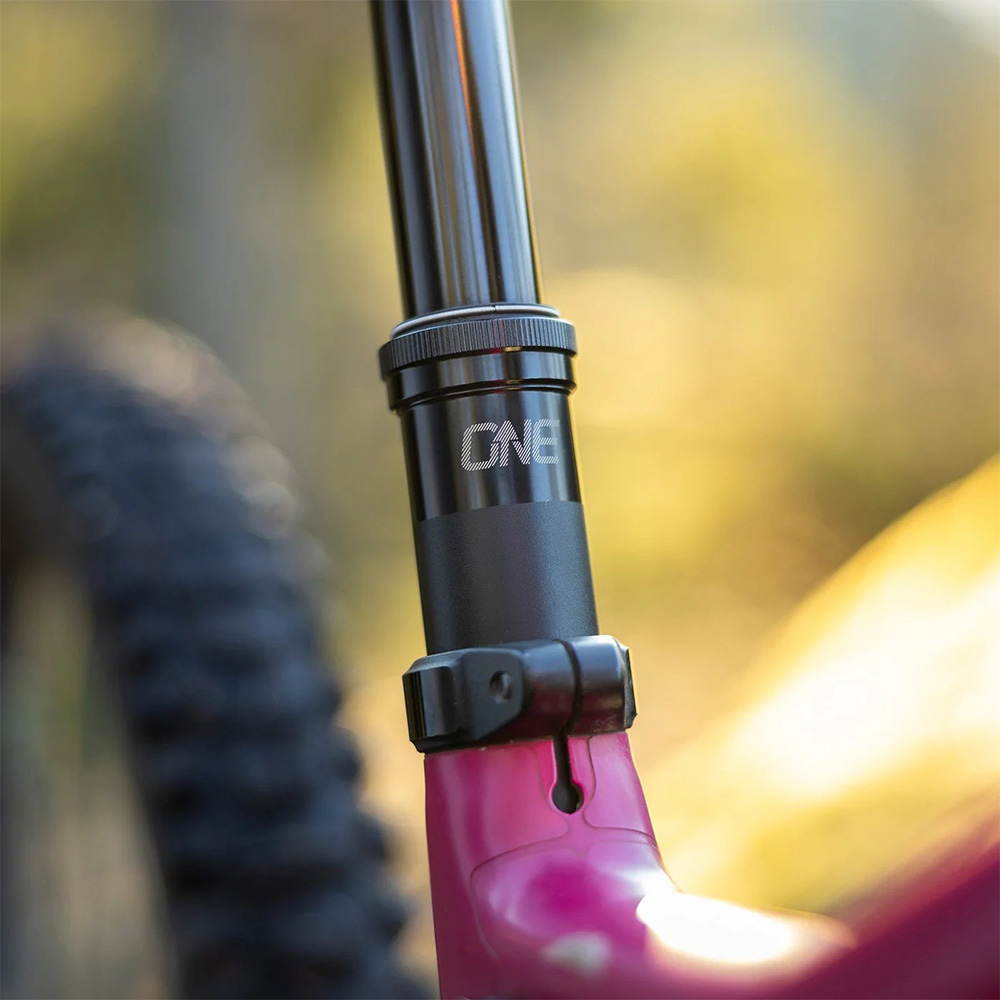
There are some other very dependable and even smoother-feeling droppers on the market, but none that I’ve used can quite hit the combination of low weight, affordable-ish price, low stack height, and low maintenance that the OneUp V3 seems to deliver.
DUER No-Sweat Slim Pant
MSRP:$129
Jed Doane: DUER is a brand that focuses largely on pants, with a stretch- and comfort-forward design ethos. We’ve written about their denim before, but with the warming temperatures this time of year, I was curious to see how their lighter-weight offerings performed.
In the case of their No-Sweat Slim Pant, the stretch fabric is a cotton / TENCEL blend with a small amount of spandex. It’s proven to be very comfortable, with a soft feel almost similar to a blended T-shirt. The No-Sweat pants have all the stretch of a more technical-feeling option like the Lululemon ABC, but with the look and feel of a cotton twill fabric.
Overall, it’s quite an impressive combination. In my experience, the No Sweat pant is a great warmer-weather option and would be an easy choice for traveling. The stretch fabric is very breathable and quick-drying, much more so than the average pair of chinos or jeans. Conversely, they’re not my first choice for colder weather or wind since they feel quite thin and porous in those conditions.
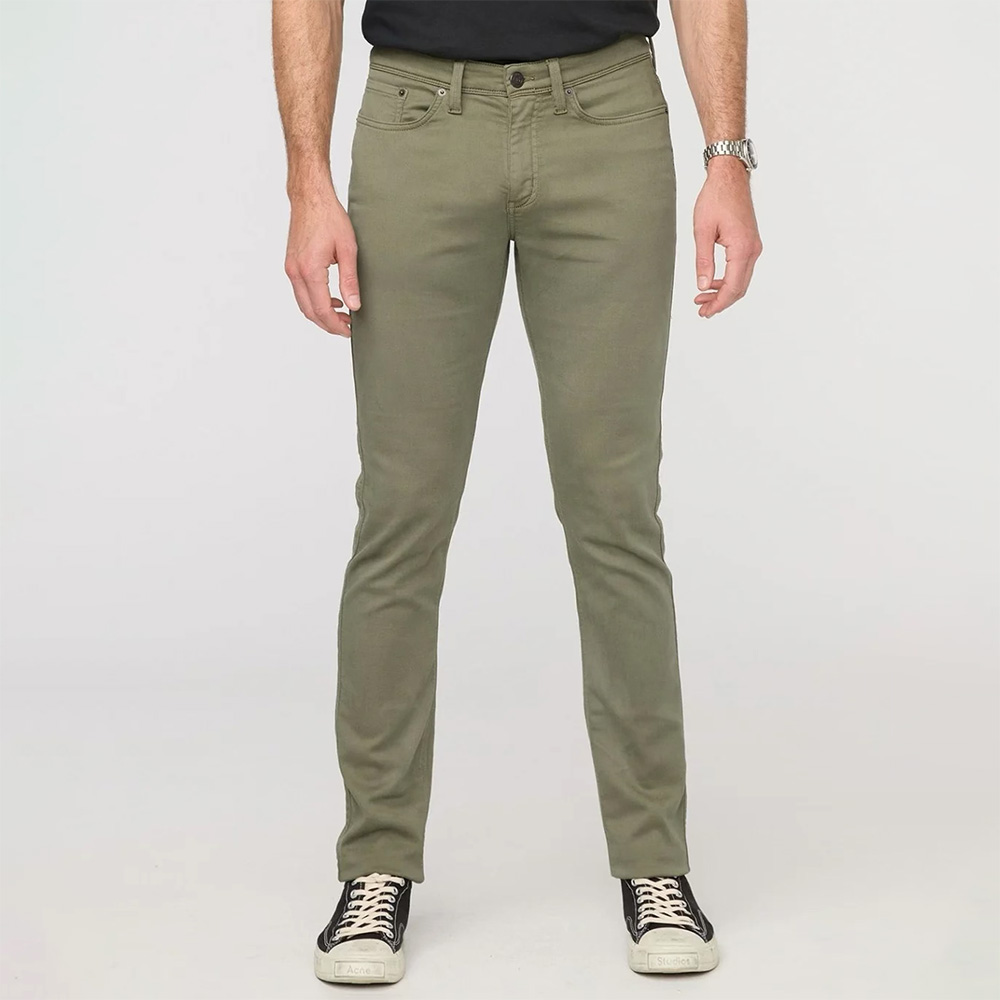
From a design perspective, the No Sweat pant is well thought-out. It features a standard 5-pocket design, and the front pockets are deep and stretchy enough for everyday use. The back pockets have a notable and solid design feature: a flap of fabric that comes down from the upper seam of the pocket that easily stretches over a phone or wallet, securing it in place. I had never seen this feature on a pair of pants before and found it quite intuitive and useful for preventing stuff from falling out. The rest of the zippers, buttons, and belt loops are all fairly standard.
The No Sweat pant comes in several fits. I chose the Slim option and found the fit to be a relatively standard slim fit with a longer-than-average inseam and slightly more room in the leg than some other slim-fit pants I’ve used. The gusseted crotch is noticeable and appreciated while walking (and running to catch the bus, which I’ve done more than once in these pants).
Overall, DUER’s No-Sweat pant is a great option for those looking for a stretchy, breathable, very comfortable, and lightweight pant that doesn’t look overly techy.
Thule RoundTrip Ski Bag and Boot Bag (45L)
MSRP: $299 (ski bag) | $169 (boot bag)
Kara Williard: I spent a good portion of the winter traveling, and being organized was the main factor determining whether each trip felt straightforward or scattered and anxious. I brought along the Thule RoundTrip Boot Bag 45L on every single trip, and it proved to be a huge help in keeping my most essential items organized and easy to access.
I find the design of this boot bag to be just about perfect. It features a large, water-resistant (and draining) compartment in which to store your boots, but this compartment is also spacious enough to fit some other miscellaneous items. For me, that often ended up being my toiletries bag and water bottle. Then, there is a large top compartment designed to store a helmet and other small accessories, but the helmet compartment is well-padded against the boots and all my helmets fit well. There is also a separate compartment with a soft lining to store goggles and sunglasses, plus a side-access pocket that’s great for gloves or other misc. items.
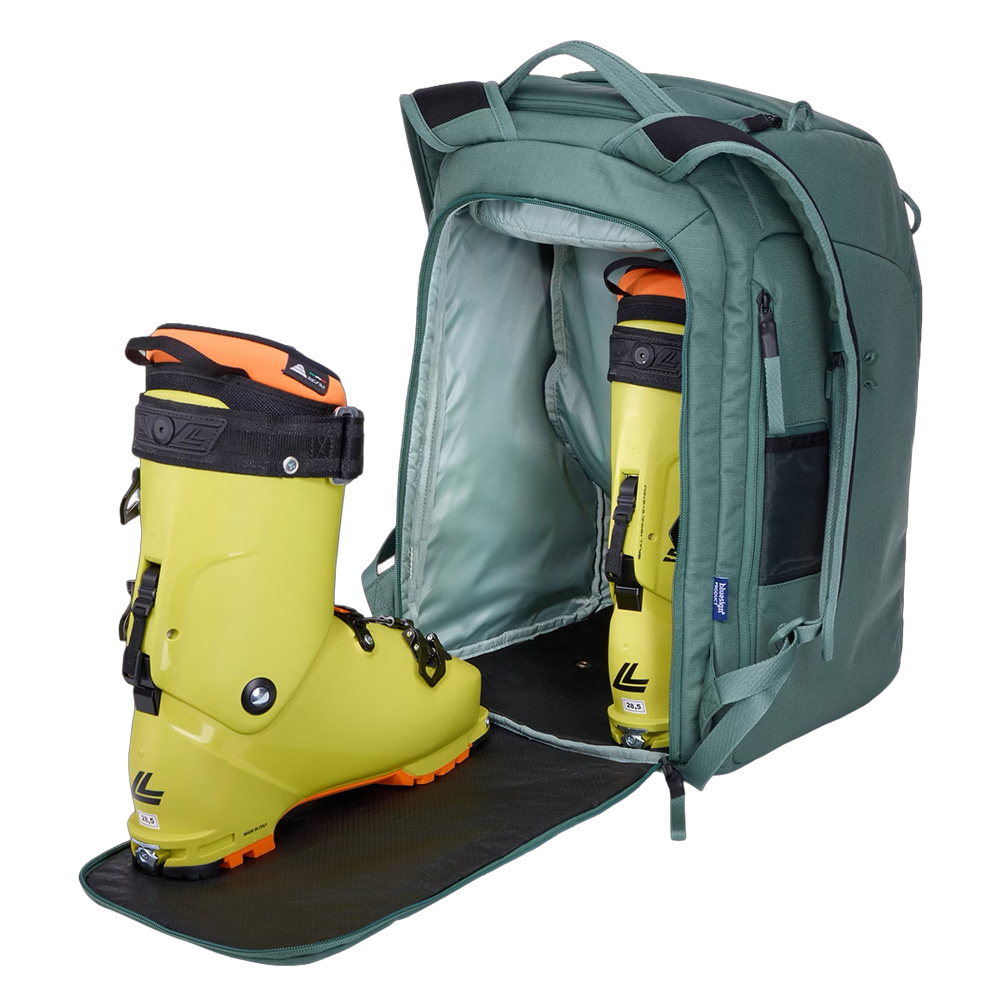
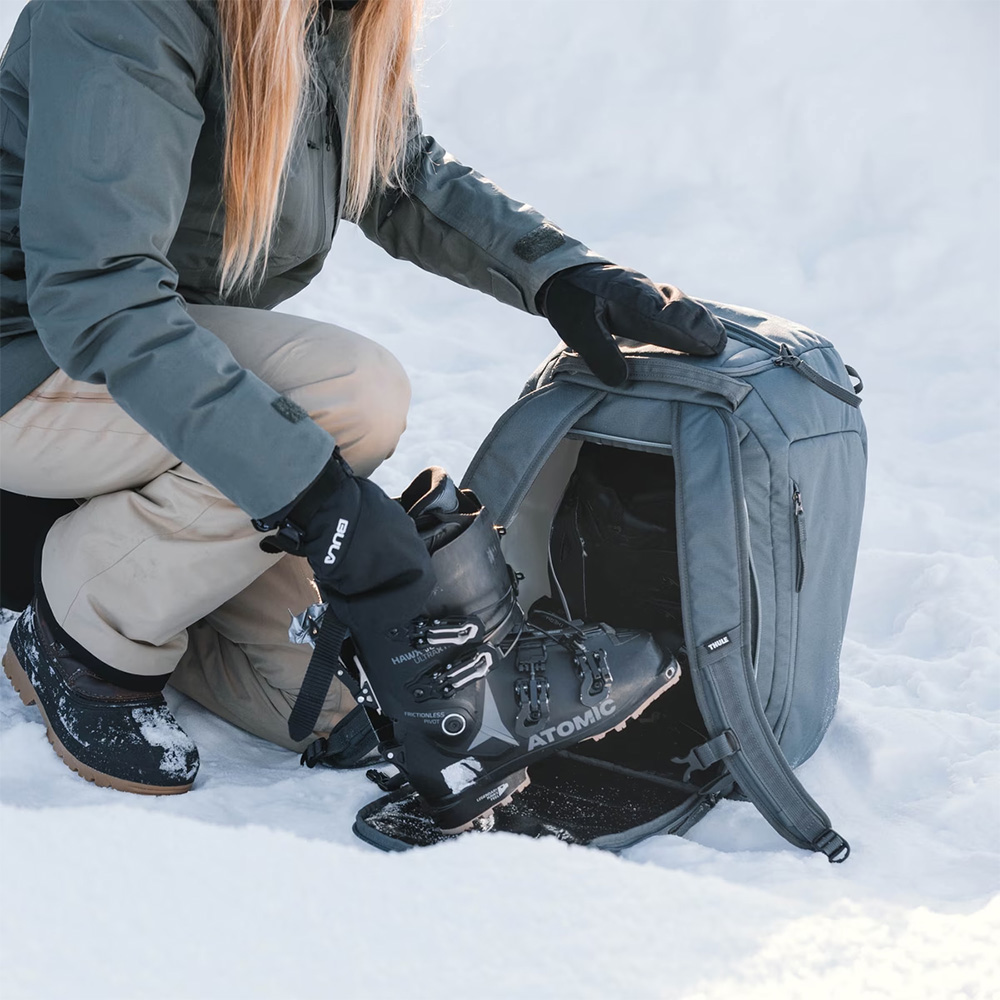
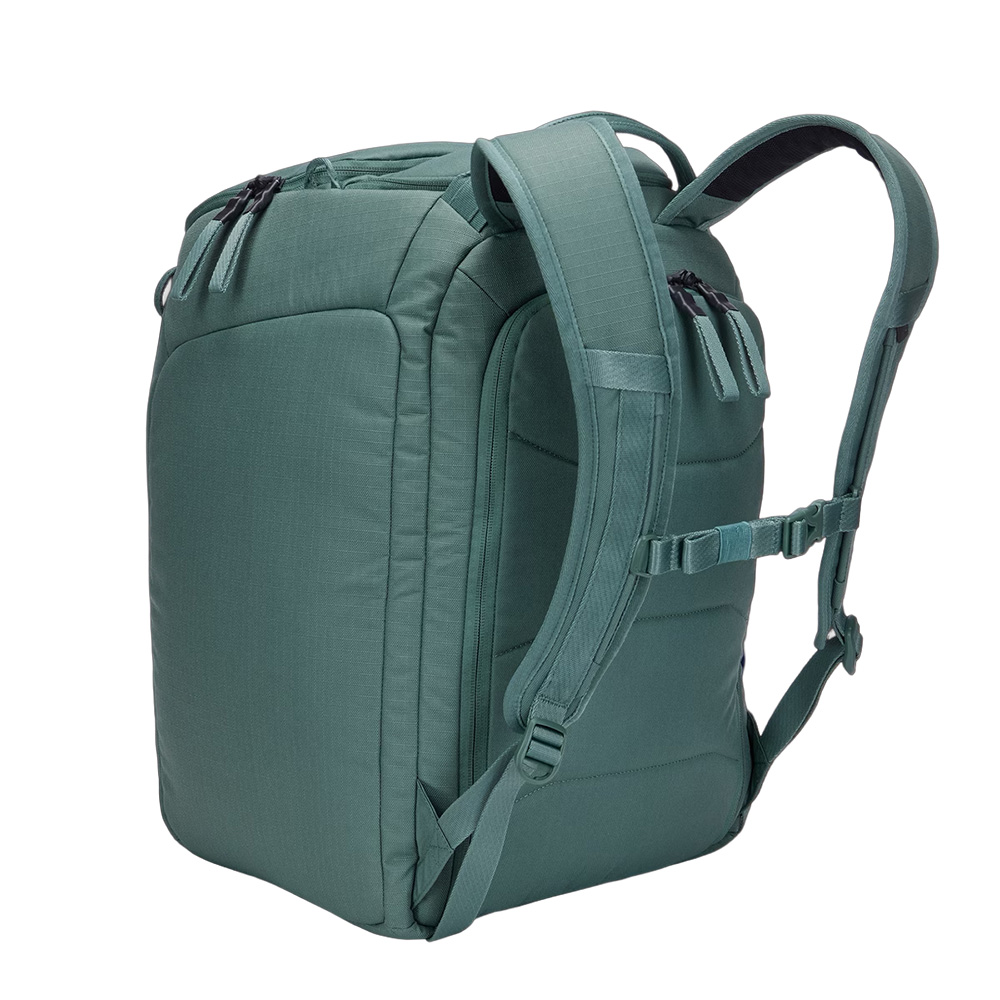
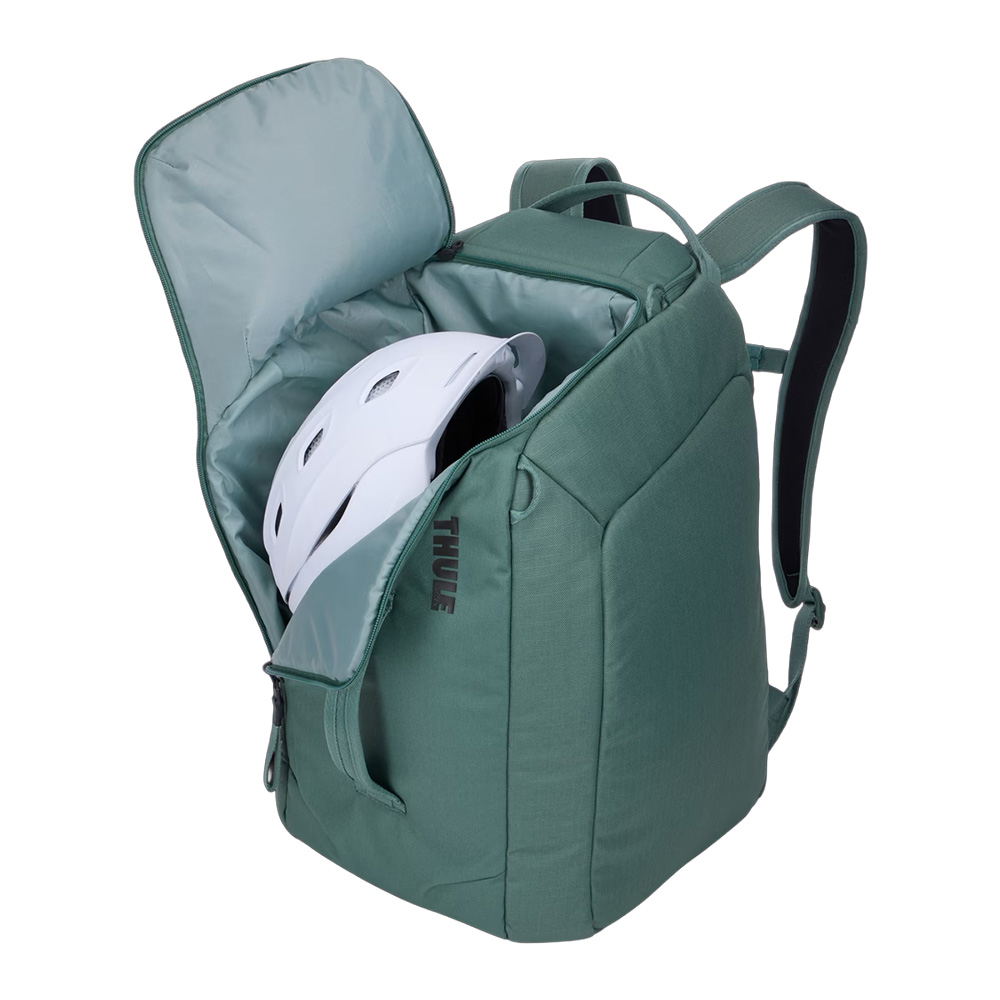
Since the boot bag was often my carry-on, I appreciated that I could store all my essential ski gear inside it while also having space for the items I like to have ready for the flight. The boot bag’s shoulder straps and chest strap make it reasonably comfortable when carrying for a long time, and so far, the bag has proven durable with its heavy-duty material (600-denier polyester, Bluesign certified). Despite being able to carry so much, the layout of the bag prevents it from feeling bulky or being too large to bring as a carry-on. Without a doubt, this is one of the items that made extended travel easier and smoother feeling throughout this winter. For those wanting even more space, Thule also offers the RoundTrip Boot Bag in a 60L capacity.
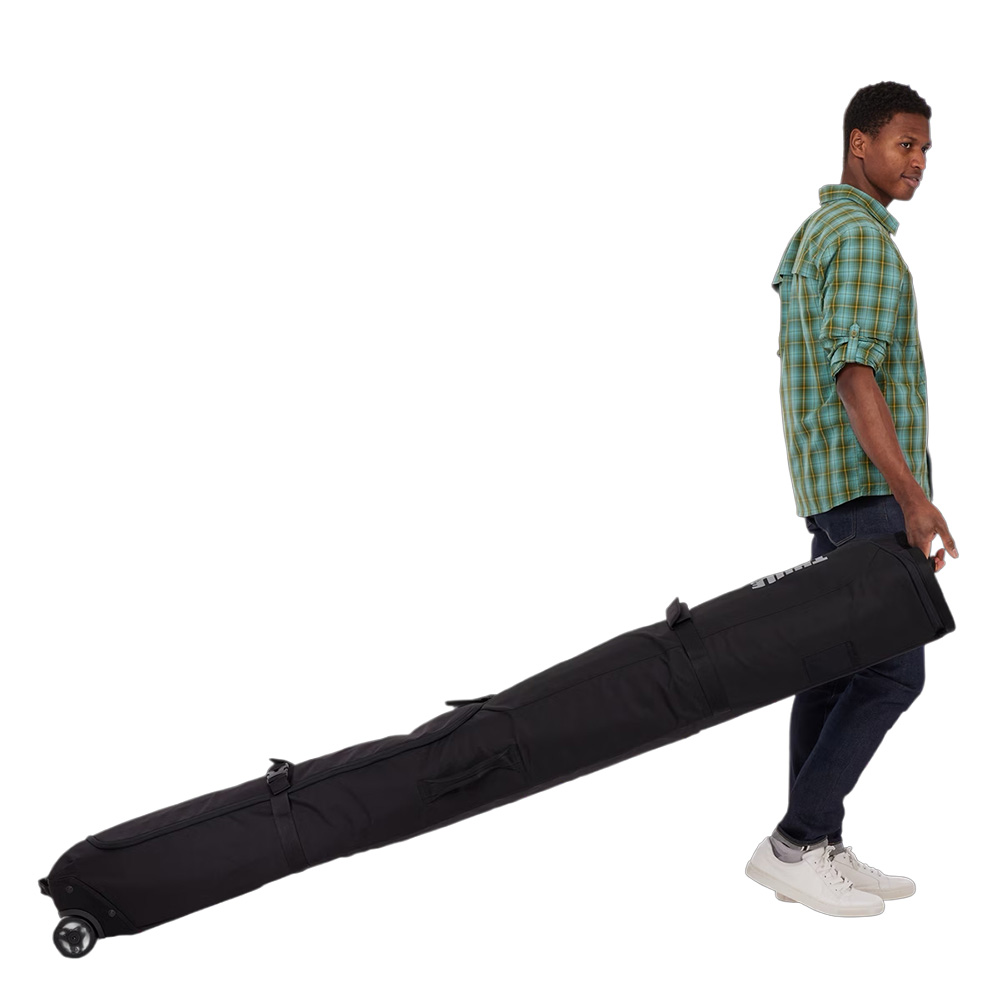
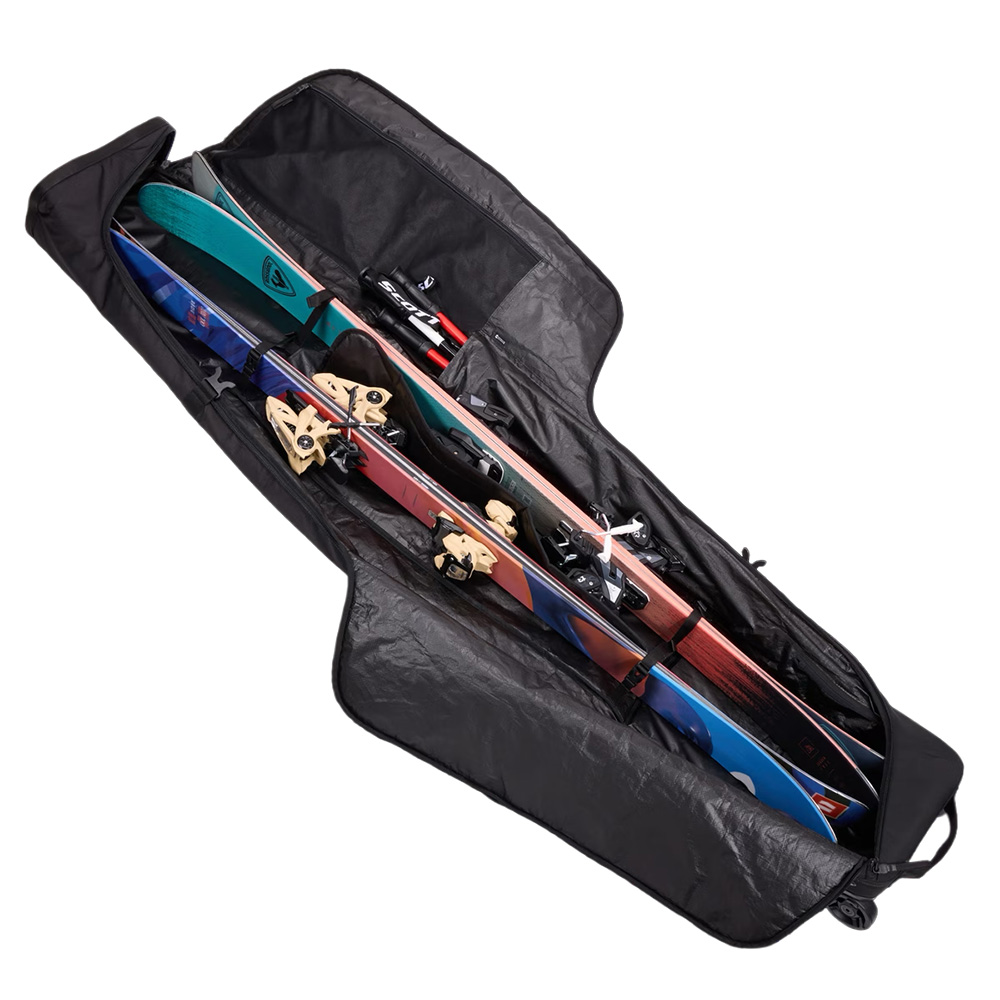


As for the RoundTrip ski bag, I have also been impressed. I used the 192 cm version that’s designed for two-ski carry, and it accomplishes that easily. For example, it allowed me to fit two pretty heavy and fat powder skis in a way that they were secure without touching each other, and it still had room to fit other items such as apparel. The bag comes with two, padded, cinch-top sleeves to protect ski tips, but I also found these useful for storing things like dirty laundry while at hotels or between travel.
The bag itself is super burly, with a lot of structural reinforcement, durable zippers, and a pretty impressive and scuff-free outer material that has so far held up really well. I appreciate how much the RoundTrip Ski Bag lets me secure its contents, thanks to straps to hold skis in place and a padded divider to put between bindings. After some long days of travel and several flights, it’s always reassuring to open your ski bag and find everything exactly as you originally packed it.
The RoundTrip Ski Bag is also fairly easy to tow through airports; the wheels and steering have proven to be quite functional. Combined with the functional storage layout, it’s been ideal for trips when I need to bring a lot of gear with me.
Overall, Thule’s RoundTrip Ski and Boot bags have become some of my favorites to use for winter travel.
Zeal Harbinger
MSRP: $249
Jed Doane: These large ‘shield-style’ sunglasses from Zeal are a new entry into the already-crowded category of broad-coverage active sunglasses, but after a few weeks of use, I’ve been very impressed.
The Harbingers feel light on my face, and they’ve stayed solidly in place on runs. They’re not the lightest frame I’ve ever used, but they feel much more solid than lighter alternatives like the Smith Wildcat or Oakley Sutro Shield. The Harbinger’s bio-based plastic frame has enough flexibility to accommodate my larger head without causing headaches, which can happen intermittently with other shades. I haven’t had any durability issues, and they feel very solid and well-made.
I appreciated the Harbinger’s nose pads (Zeal calls them “ProFlex”), which feature well-thought-out slots that presumably decrease the surface area of the nose that contacts the rubber (and accordingly produces sweat) while still maintaining grip. This well-designed, sweat-ready rubber is their greatest strength in the shield sunglass category, doing a much better job than others, such as the Smith Wildcat or Pit Viper 2000.

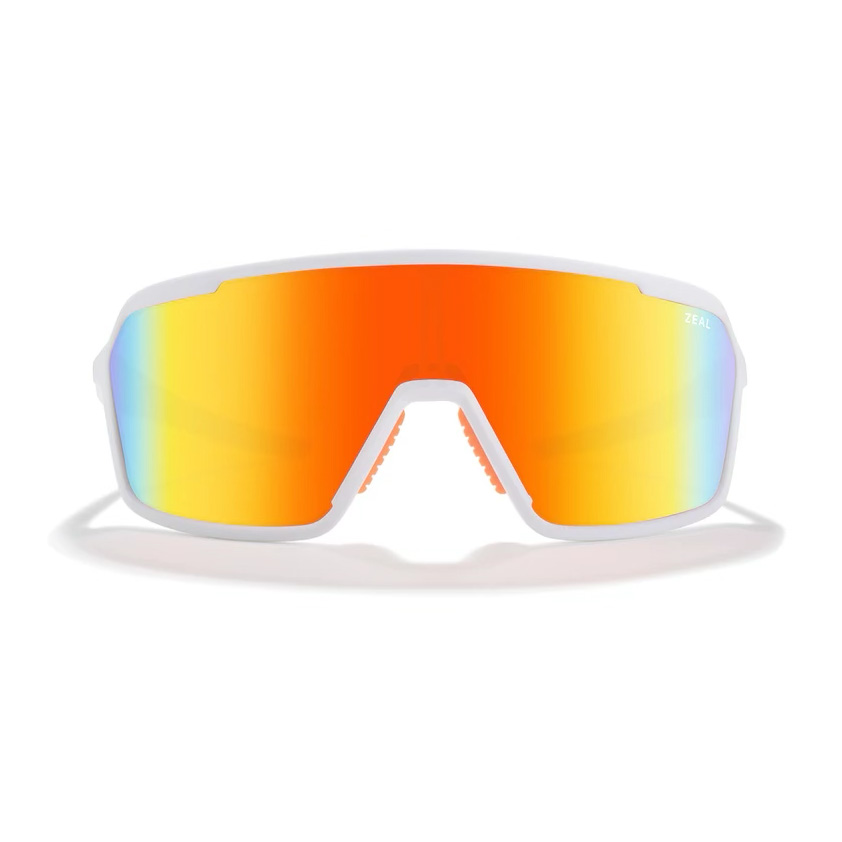
The Harbinger’s field of vision is also impressive, especially the lateral view, which isn’t surprising given the large coverage and extended lens. The Harbinger uses a stamped-style lens (rather than spherical), similar to most others in the shield category. There is a metal brace in the nose area that doesn’t practically affect the visual field. Zeal reportedly uses their “Optimum” goggle lens technology in the Harbinger, which is meant to boost contrast and clarity. While I haven’t noticed a big difference vs. other sunglasses, I found the Harbinger’s optics to be perfectly acceptable for running and cycling.
Overall, the Zeal Harbinger is a solid entry for cycling, running, and other active outdoor pursuits.
Mil Usos Char Goals Everything Bar Cleanser
MSRP: $26
Kristin Sinnott: When I came across the Char Goals Everything Bar Cleanser, I wasn’t actively looking for a new soap, but it piqued my interest for a few reasons — one being that it’s reportedly biodegradable and safe to use in waterways. As a long-time user (but never a lover) of other biodegradable soaps designed for camping, I was interested in finding something better. And the Everything Bar exceeded my expectations.
I’ve been using the Char Goals Everything Bar for the last 8 months, and I’ve finally scrubbed away the last sliver. It has been the only soap I’ve used at home during this time, and while I don’t use it as a shampoo – my hair is pretty finicky – I have been very happy with it for my skin. The fragrance-free bar suds easily and rinses away without leaving a slick residue. I sometimes use the Char Goals Everything Bar with Mil Usos’ Scuff Love Silk Exfoliating Glove when I want a deeper clean. This combo was especially helpful after Costa Rica, when my skin opted to shed a layer.
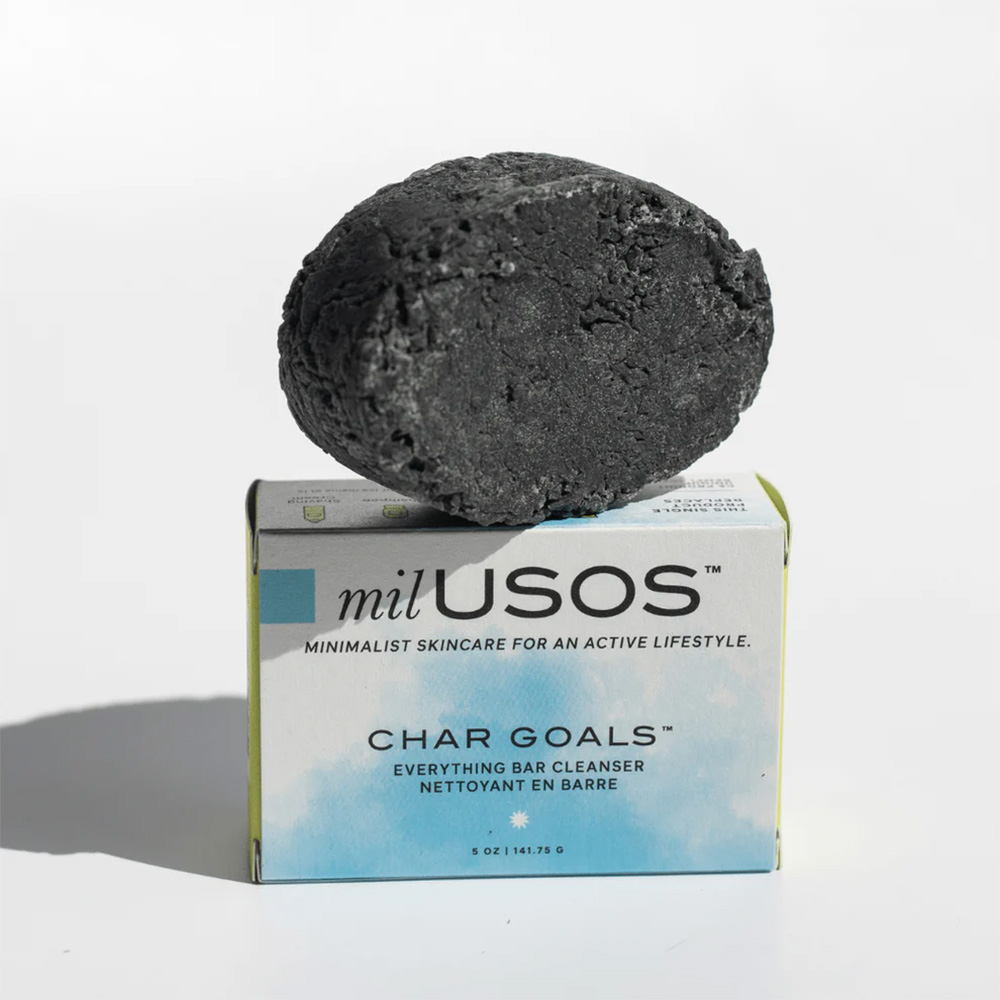
I’d recommend giving the Everything bar a try if you have sensitive skin, are looking for a good, clean bar of soap, and/or need a biodegradable bar for backcountry use. I just reordered more bars for my house and I’m eager for them to arrive.
Nutshell 17 Liter Cooler
MSRP $180
Noah Eckhouse: The continuing evolution of hard goods in the outdoor industry is really amazing to watch. Sunglasses, ski boots, helmets, and bike suspension are great examples of how creative engineers and project designers are always looking to make their own gear better.
In the case of coolers, they took a quantum leap when they went from a fragile, leaky Walmart-level product to today’s sleek options from Yeti, RTIC, and many others. These new coolers can keep frozen items in a solid state for days or weeks, are bomb-proof, … and can cost 5-10x what we paid for their predecessors. Unfortunately, they consume a lot of space in your garage between trips, and they can take up to a thousand years to decompose in a landfill.
Nutshell is a cooler company that’s trying to create the next step in cooler evolution.


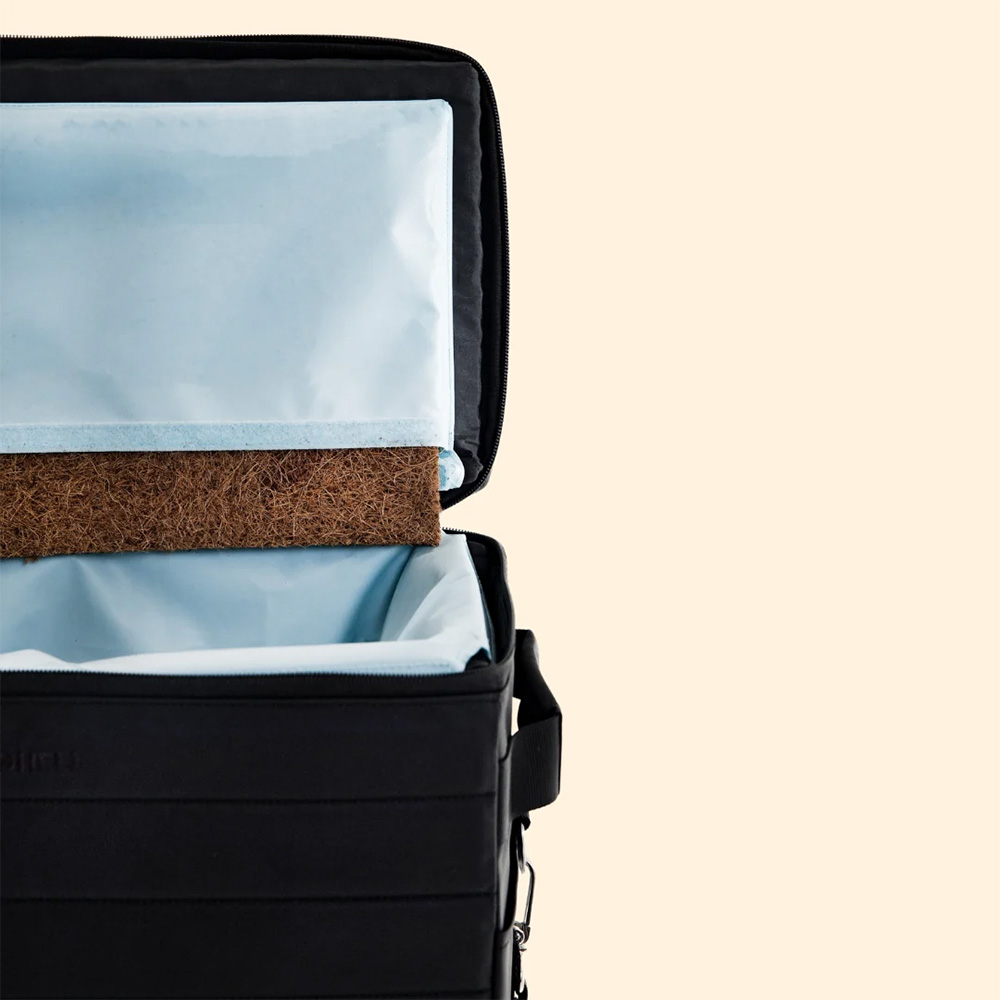

Based in Southern California, Nutshell’s founders worked with a natural material — coconut husks — to create a product that reportedly insulates as well or better than plastic foam, is biodegradable, supports local farmers in the Philippines (where the husks are typically a waste product), and is foldable. Coconut husk fibers are hollow and contain lots of trapped air spaces, mimicking the insulating properties of plastic foam.
I got my hands on the 17-liter version of Nutshell’s soft-sided cooler and really liked it. First, and most importantly, it kept cold and frozen items cold for as long as I needed, up to two days. It holds up to 30 12-oz cans, about four wine bottles, or a pile of refrigerated and frozen foods, and keeps them cool all afternoon while I do other errands in Gunnison. Additionally, I love that I can fold it down to take up way less space at home. The shoulder sling is sturdy and fits me comfortably when hauling. And needless to say, the soft structure is much more comfortable to carry over your shoulder than a hard-sided plastic box.
The Nutshell cooler has a removable inner liner that serves as the waterproof barrier between whatever’s inside and the insulating outer layers. This makes it easier to clean, but I have been very careful with this element, since the rest of the cooler serves as an insulator and not a waterproof box.
Like all soft-sided coolers, there are some trade-offs. The Nutshell cooler isn’t bomb-proof, and you can’t pile firewood on top, clean fish, or sit on it. And if you need the contents to stay cold for close to a week or more (rather than a couple days), rigid coolers will always make more sense as a long-term cooling solution. However, according to Nutshell’s in-house testing, their cooler outperformed several other soft-sided competitors.
If you’re in the market for a soft-sided cooler, particularly if you’re curious about less environmentally harmful alternatives, Nutshell warrants a close look. They are available at REI or directly on the Nutshell website. Let me know what you think!
Party Shirt International Stretch Tech Party Shirt & Shorts
MSRP: $59 (shirt) | $39 (shorts, currently on sale for $29.25)
Dylan Wood: I recently took Party Shirt International’s Stretch Tech Party Shirt and Shorts to the Caribbean, and they both quickly became some of my favorite pieces of apparel.
The Stretch Tech Party Shirt is comfortable, functional, and of course, stylish. The fabric is very smooth and soft, and feels great on the skin. It’s lightweight, breathable, stretchy, and never wrinkled despite often getting shoved into my pack during my travels. It also isn’t very susceptible to getting stinky, which was a plus since I had to wear it a few times without washing in between (turns out, there aren’t washers and dryers on most sailboats).
Party Shirt International’s “Leg Shirts” (aka, shorts) are also extremely comfortable and functional. These shorts are on the shorter side (4” inseam), so you can show off those quads you worked hard on all winter.
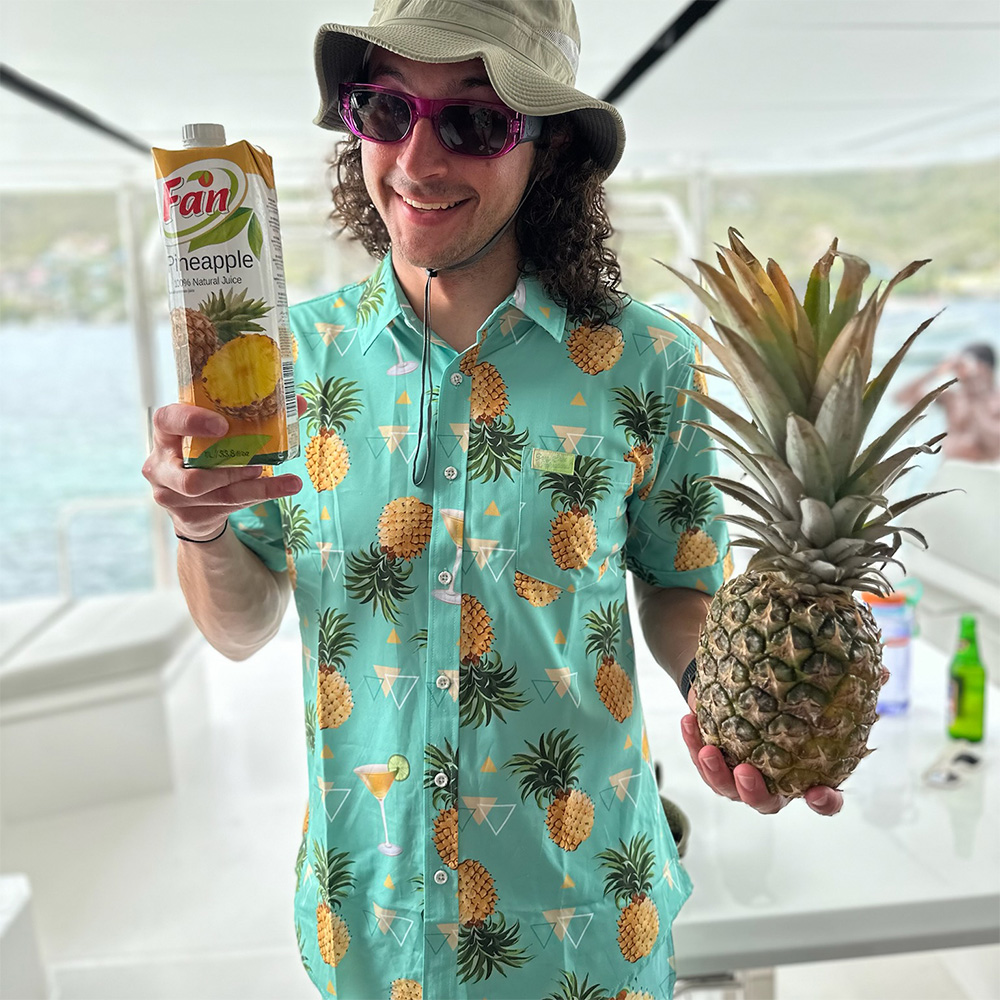
Just like the shirt, the material is soft, light, stretchy, and comfortable, and I’ve found myself wearing these shorts around the house and even sleeping in them. While they’re comfortable enough to wear commando, I wouldn’t recommend doing so if you might get wet — you might show a little more than you wanted.
I opted for the matching “Good 2 Drive” pattern, with the pineapples matching the tropical setting in the Caribbean. I really enjoyed hanging out at the beach, swimming, playing golf, and playing tennis in this set, and I’m sure it’ll continue to make appearances many times throughout the summer.
WTB Rocket Saddle
MSRP: $50 to $120
David Golay: The WTB Rocket saddle has been around for decades, but WTB recently gave it an overhaul, and I’m a huge fan of the new version.
The new Rocket shares some distinct similarities with prior versions in its general shape and design brief, but a lot of the details have been tweaked. WTB describes the Rocket as being for “mountain bikers who prioritize comfort and support during long rides,” and, at least for my preferences, that description is pretty on point.
As with earlier versions of the Rocket, the new one features a curved front-to-back profile that prioritizes a single, well-supported position on the seat, rather than being adaptable to a range of positions. It’s also still relatively thickly padded, though the nose is a bit slimmer and less cushy than earlier versions (I find this new shape to be more comfortable and less prone to chaffing). The back of the new Rocket is also more upturned to offer a more supportive perch on steep climbs, and the padding is a notch firmer overall, at least on the Titanium version I’ve been testing.

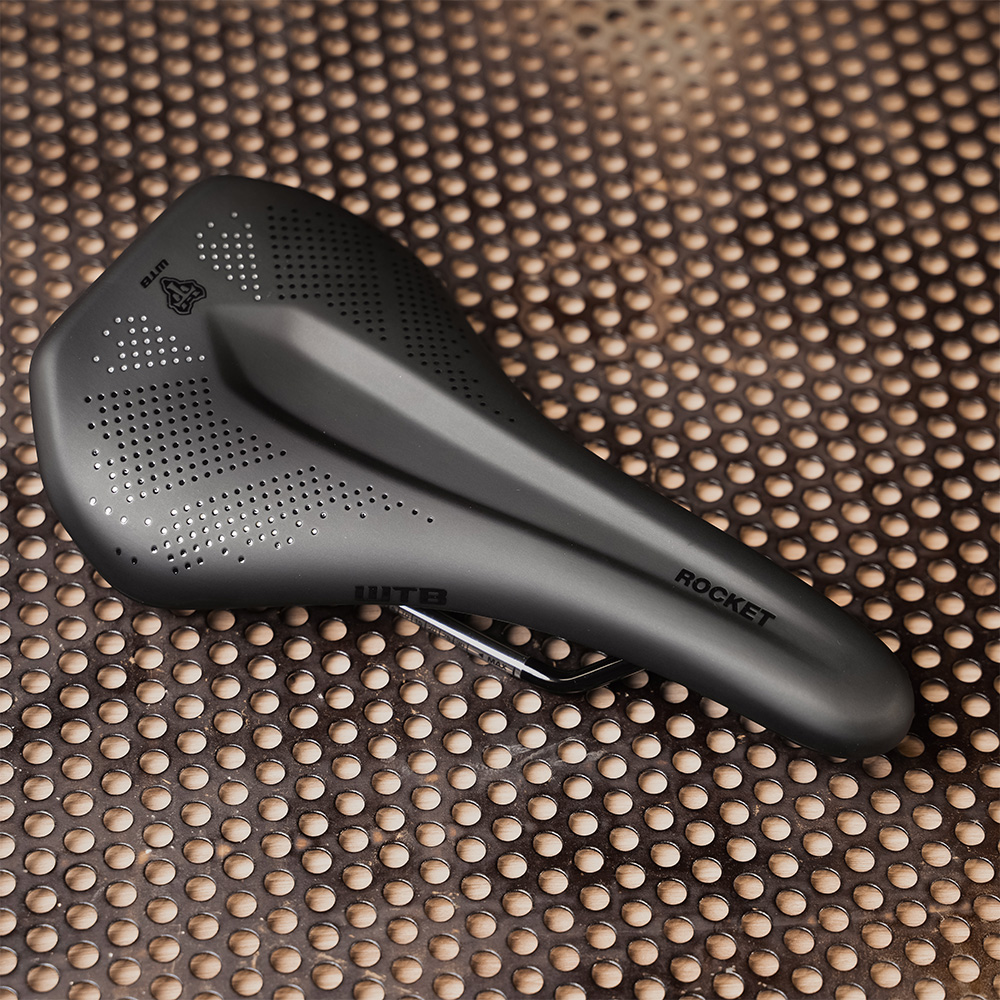
WTB offers four different versions of the Rocket; they feature the same shape but different padding and rail materials. The least expensive (MSRP: $50) option gets steel rails and DNAx padding, which WTB describes as being “soft to the touch, and a great option for anyone worried about sore contact points on their saddle.”
The Cromoly ($96) and Stainless ($110) versions both use HLX padding, which WTB describes as being “more plush than our DNA padding,” the latter of which is found in the top-tier Titanium version ($120). I like the feel of the firmer DNA padding in the Titanium Rocket and suspect that I’d be less into the softer versions in the lower-tier options, but haven’t tried any of those to confirm.
Reviewing saddles is challenging because everyone’s anatomy is different — what works for me won’t necessarily work for any given other person. But for my tastes, the new Rocket is extremely comfortable and strikes a particularly nice balance between being fairly well-padded without being so soft and squishy that it feels mushy and unsupportive.
The upturned tail feels especially nice on steep climbs without being so pronounced as to cause issues the rest of the time, and the Medium width (which WTB recommends for sit bone spacing between 110 and 125 mm) works great for me, too. Unfortunately, there aren’t any other width options, at least for now.
7mesh Desperado Merino Shirt SS
MSRP: $80 USD
Zack Henderson: My second item for this month is another one that we’ve talked about before, but to be fair, it’s been a while since we talked about the 7mesh Desperado shirt in our 2022 Men’s MTB Jersey Roundup.
With the weather turning warm and a touch humid for my tastes here in Northwest Washington, my short-sleeved shirts have risen to the top of my drawer full of bike clothing, and the 7mesh Desperado is by far my favorite at the moment.
That’s because of the Desperado’s combination of casual styling, good fabric performance, and a great fit. I generally pick riding clothes with minimal branding, and the Desperado delivers there, with nothing to see but an embroidered 7mesh logo on the sleeve.
Its fabric is a merino wool and polyester blend, and while the wool content is just under 50%, I’ve found that the fabric still balances stink resistance and breathability while being fairly damage-resistant as compared to my more merino-rich tops.
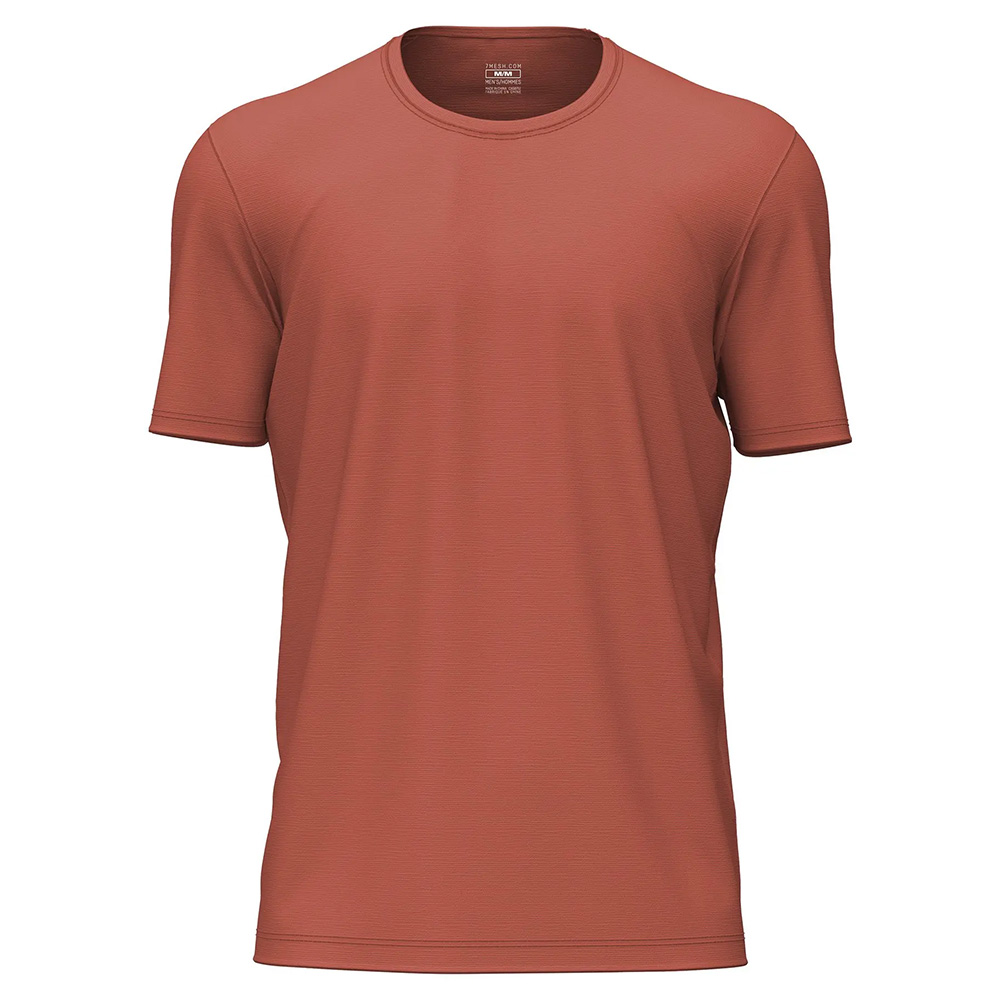
The Desperado is fairly lightweight, but for me, the big selling point is how well it wicks sweat without feeling even remotely waterlogged. The Medium delivers a just-right fit for my 6’, 165 lbs / 183 cm, 74.8 kg self, too.




